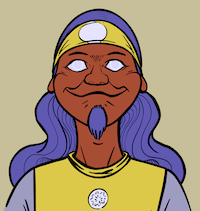What are the necessary low-effort ingredients that, when aligned, create a well-paced RPG session?
I didn’t run a game for several months. I did play a few games though, to help out my friend with his “Cypherfinder” project (if we count rolling eyes and bickering as helping).
A few weeks back, a curious combination of events happened. On Friday we had a slow, poorly paced game of Cypherfinder, then on Saturday and Sunday, we played fast-paced sessions of the Witcher tabletop game.
The contrast between the two experiences got me thinking about what kind of game structures GMs should employ that can help with pacing and creating dynamic and fun sessions. What are the necessary low-effort ingredients that, when aligned, create a well-paced session?
How does a poorly paced session look?
Here are some clues:
- A lot of conversation happens at the table, but it doesn’t push the game forward, creating a mismatch between the table time and game world time.
- One or more players are not engaged and are slowly drifting into boredom.
- The game lacks variety. If you spend a whole session role-playing social interaction scenes, it’s difficult to pace that.
- Players act outside of scenes or without interacting with the world.
With all this thinking, I identified several techniques that might help alleviate these problems:
- Keep a tight scene structure. Use hard cuts.
- Keep a check on the world clock.
- Prepare a variety of activities.
Scene structure
Whatever players do, they should do it from within a scene at a given location. No exceptions. A typical example is when players are planning their next course of action. Depending on the complexity of the situation, this can take a lot of table time. Most of the time, the GM would be inclined to let them go about it. In the end, something like scheming a heist is a fun activity. The problem is when that activity happens in meta-game limbo, with the game world clock on pause.
Instead, lets set a robust heist planning scene:
GM: You are in the local bar. It’s midday with only a couple of patrons here and there. The waiter is cleaning glasses, his thoughts far away. You are sitting at a balcony table with a view of the front entrance. The main doors squeak from time to time as people are coming and going.
In the above scene setup, I did several things:
- Set the location with a bit of color to it.
- Set the time of the day.
- Introduced the door as an active part of the scene.
The time of the day is essential as I want to progress the world clock for everything they do. More on time management later on.
The door is my intrusion point. If planning takes a lot of table time, and I decide to break up the scene to keep up the pace of the game, their complication will enter through that door.
Time Management
Activities that happen in seconds or minutes are easy to track, but a bit of structure is needed for the more vague actions that take several hours. Think cleaning up premises, planning heists, information gathering, crafting, repairs, etc.
The main thing here is to split the day into several parts, usually 4 or 6. Daily activities advance one or more dayparts. In my example, I could say that heist planning will take the whole midday.
“…there are more general times of day marked by the location of the sun: early (before sunrise), morning (after sunrise and before lunch), midday (the brightest part of the day), wane (late afternoon), ebb (when it begins to get dark), and night.” Entry on time from the Ninth World Guidebook.
What we achieved here is that we have players firmly in the world, and even if they are daydreaming on how to conquer the world, the game clock is running. We also have an avenue to interrupt them in case table time gets abused.
Variety
One more essential ingredient is to prepare various activities that players can engage with during the session. The same thing happens in TV shows where each episode has the main thing going on and a couple of side stories. You probably have your main plot ready, so throw in some of the following stuff:
- Small crafting task
- Info gathering
- Quick brawl
- Local exploration
- Mini mystery
- One boring but necessary thing that someone needs to do
- Opportunity to earn some quick cash
- An inconvenient errand
- Annoying NPC who is sticking his nose where he’s not supposed to
- A looming threat
An Experiment
I scheduled a game intending to try out how all these things play together. I hadn’t run a game for two months, and the last session ended with a boss fight and a lot of loot.
I knew that if I started where they left off, it would eat up at least an hour of table time before they get organized to do something that would move the game forward.
So I took my four players and I set them up in several scenes, all split up. I wanted to start them each with a limited scope and easy decisions. I also wanted to test hard cuts technique in an extreme situation with three to four different things going on at the same time. I formulated this as a group GMI, so they would allow me to re-position their characters at the start.
My main arch is a looming doom that will incite an epic fight, but because they had a boss fight last session, I don’t want to introduce it in this one. Story Beats 101. Over the last few sessions, I was hooking them into Slaves of the Machine God, so this is my main course for tonight.
Start Scene 1 - Nano
Nano is in a tattoo shop where Radius left a clue he found (the Memory Bias scenario from SotMG), the location of a tavern in a shady place of the town. A quick and dirty way to proceed to hook them into Slaves.
Start Scene 2 - Wright
Wright is in a local ambulance speaking with a chiurgeon who is asking for help on repairing some equipment. This one is a quick crafting task, a way to connect them with the community. Recently they robbed the place, but the chiurgeon doesn’t know it was the players.
Start Scene 3 - Glaive & Delve
These two are in front of their newly acquired mansion, which is in disrepair due to the recent fighting. Workers are in front of it, refusing to go in as they hear growling from the basement and are seeing a human face. I created the mansion for this session as it was one of the rewards they got in the last one and decided to put a monster in the basement. The monster is actually a Thuman grieving his dead master. Here I planned to introduce companion rules from Predation because they are so awesome and fun!

I start the game with everyone in their scene. I cut on any mini cliffhanger. Glaive and Delve are near the basement and hear the growling - cut to the Wright. Wright is in the middle of haggling for materials - switch to the Nano examining clues.
Cut by cut, scene by scene and they eventually tame the Thuman and merge the party to proceed for the epic fight and chase scene on Federin’s farm in Memory Bias.
I was pleased with the results. I had a variety of little things going on, and hard scene cuts kept all of the players engaged. I utilized the world clock for activities like crafting, healing the Thuman, and travel.
There was one situation where I sensed the party started to waste table time, right about when they were to enter the mansion basement. Usual stuff like who will go first, what equipment we have, what is our “door routine,” etc.
I intrude their conversation with: “Heavy rain starts pouring. You hear water dripping in places where the roof is damaged.”
The rain was just a flavor, but it broke their train of thoughts and reminded them that the world is alive and the clock is active. A neat and useful trick!
The friend who ran that slow session which triggered all of this thinking played the Nano. At the end of the night, he turned to me and said:
“Fuck you, man.”
Best compliment ever.


Comments